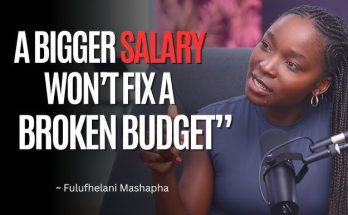In an economic landscape characterized by rapid change and inherent uncertainty, the traditional model of relying solely on a single source of income is increasingly revealing its vulnerabilities. From unforeseen job market shifts to unexpected industry disruptions, placing all financial eggs in one basket can expose individuals and households to significant risks. Consequently, a growing number of forward-thinking individuals are embracing a more resilient and empowering financial strategy: cultivating multiple income streams. This approach, far from being a mere trend, represents a fundamental shift towards greater financial security, amplified wealth creation, and enhanced personal freedom, offering a robust buffer against life’s unpredictable turns.
The most immediate and perhaps most compelling benefit of diversifying one’s income sources is the dramatic increase in financial stability and security. In a world where even established companies can undergo rapid restructuring or face economic downturns, the loss of a primary job can be financially devastating for those with only one income stream. However, when an individual has additional sources of revenue, the impact of such an event is significantly mitigated. Imagine a marketing professional who loses their full-time job. If they also have a steady freelance writing gig on the side, a passive income from a rental property, or earnings from an online course they created, the immediate financial shock is cushioned, providing crucial time to seek new employment without succumbing to overwhelming financial pressure. This diversification acts as a personal financial safety net, absorbing shocks that would otherwise lead to significant distress.
Beyond mere stability, multiple income streams serve as a powerful accelerator for wealth accumulation. Relying on a single salary, while potentially comfortable, often sets a linear path for financial growth. Each additional income stream, however, introduces a new engine for generating capital, allowing for exponential growth over time. The extra money earned from these secondary sources can be strategically channeled into investments, high-yield savings accounts, or used to pay down high-interest debt more aggressively. For instance, the income generated from a side hustle like graphic design or web development might not be substantial on its own, but when consistently invested over several years, it can contribute significantly to a retirement fund or a down payment for a major asset. This continuous infusion of capital creates a compounding effect, pushing individuals faster towards their financial goals than a single income ever could.
Furthermore, pursuing multiple income streams often fosters invaluable skill development and personal growth. The very act of setting up and managing a new revenue source typically demands learning new skills, whether it’s digital marketing for an online business, property management for a rental, or advanced coding for freelance projects. This continuous learning expands one’s professional repertoire, making them more adaptable, marketable, and resilient in the face of career changes. For example, a teacher who starts a tutoring service might enhance their communication and organizational skills. An accountant who invests in real estate might gain valuable insights into property markets and lease agreements. These acquired competencies are not just beneficial for the income stream itself but can also enhance performance in a primary job or open doors to entirely new career paths.
The psychological benefits of having multiple income streams are also significant. It instills a greater sense of control and empowerment over one’s financial destiny. Knowing that you are not entirely dependent on a single employer or a single economic sector can reduce stress and anxiety related to job security. This enhanced peace of mind can translate into better decision-making, greater confidence, and a more positive outlook on life. It frees individuals from the potential fear of redundancy and allows them to pursue passions or take calculated risks that might otherwise seem too daunting. This freedom is not just financial; it’s deeply personal, enabling a life lived on one’s own terms rather than dictated by external economic forces.
Moreover, multiple income streams can provide the capital and freedom to pursue entrepreneurial ventures or passion projects that might not initially be lucrative. If a primary income covers living expenses, a secondary income can be used to fund the initial stages of a startup, invest in equipment for a hobby-turned-business, or support a creative pursuit like writing or art without the immediate pressure for it to generate profit. This financial cushion can be the difference between a dream remaining a dream and it blossoming into a tangible reality. It allows for experimentation and learning, crucial elements in any successful entrepreneurial journey.
In practical terms, establishing multiple income streams can take various forms. These can include active income sources like freelancing, consulting, part-time work, or starting a small business. They can also involve passive income streams such as rental properties, dividend-paying stocks, royalties from creative works, high-yield savings accounts, or income from online courses or digital products. The ideal mix often combines elements of both active and passive income, balancing immediate earnings with long-term wealth building that requires less ongoing effort. The key is to leverage existing skills, explore new opportunities, and often, to start small and scale gradually.
In conclusion, the wisdom of cultivating multiple income streams transcends mere financial advice; it is a philosophy for resilience, growth, and empowerment in a fluid economic environment. By diversifying revenue sources, individuals can bolster their financial security, accelerate their wealth creation, enhance their skill sets, and gain a profound sense of control over their lives. It represents a conscious decision to move beyond vulnerability towards a position of strength, transforming potential financial anxieties into opportunities for innovation, freedom, and sustained prosperity. Embracing this strategy is not just about making more money; it’s about building a more robust and fulfilling financial future.



